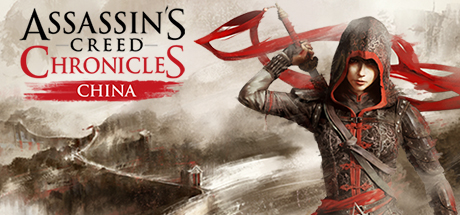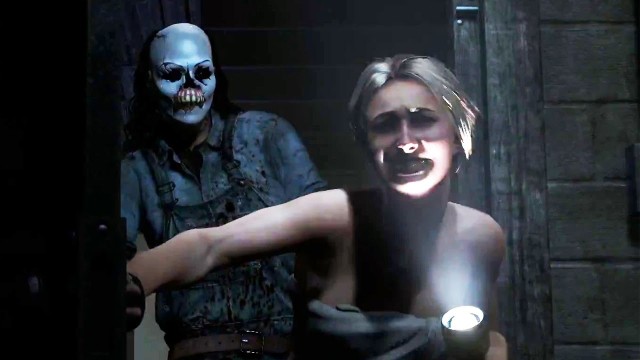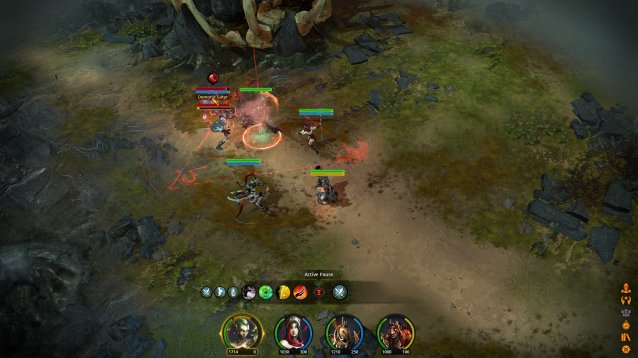

About fifteen minutes into Middle-earth: Shadow of Mordor, Talion (the playable character) gasped for breath as he attempted to recover from the dozen arrows in his chest that my poor defense had failed to avoid. At the same time, a seemingly random Uruk archer cheered in celebration at my defeat. Unlike cinematic death scenes in a game like Tomb Raider, this gruesome cinematic carried more than emotional weight. This new rivalry between Talion and the archer grunt, named Malmug the Crow, would evolve into a battle that distracted me from the main story and kept me busy for hours. As a result of my first death, a few important things happened; Malmug received a promotion to Captain in Sauron’s army, I became hellbent on taking him out and found a way to leave behind the strict lore established in The Similarion, and Tolkien’s other novels, without disrespecting the universe. I started to become a true believer in Shadow of Mordor.
In Shadow of Mordor, developer Monolith teams up with Warner Bros. Interactive to take gamers to the period of time between The Hobbit and The Fellowship of the Ring, when the dark lord Sauron’s armies are building up strength behind the walls of Mordor. The mostly open-world third-person action RPG puts players in control of a recently deceased Ranger, named Talion. After witnessing his family’s brutal murder in the game’s unique opening cinematic/tutorial level, Talion is cursed to linger somewhere between the world of the living and the dead. That’s where the journey kicks off.
Talion is resurrected by a mysterious Wraith that has possessed him. Although the Wraith seems to know a few things about the land of the not quite living, he has no memory of his past life and can’t explain his connection with Talion. The pair are left with no knowledge about how to break their curse and decide to cut their way through Sauron’s armies until they find Talion’s murderer. Players control Talion, the Dark Ranger, throughout the third-person action game, but the Wraith’s voice is always present in the hero’s head.
The hack-and-slash adventure takes the Ranger (and the Wraith) throughout Mordor hunting down answers about their curse and vengeance for the loss of Talion’s family. The premise sets up an exciting single player solution to capitalizing on the desire to play both a Midde-earth Ranger and a character with some amount of magic running through their veins.
One of the major selling points of Shadow of Mordor is that every success or failure changes the world thanks to the game’s Nemesis system. The Nemesis system allows random enemies to rise up through the ranks of Sauron’s army and is introduced early in the game, assuming you bite the dust as quickly as I did, and is incorporated into the quests and side missions incredibly well. Although it would only take somewhere around 15 hours to power through the game’s main story mode, it is near impossible not to get distracted by hunting down the Captains who have stood in your way at some point in the game. After losing to a Uruk, they will always level up in some way, making them more challenging in future battles. The next time you cross paths they could be wearing better armor, sporting a scar you gave them, or maybe they’ll have a new ability. The impact that Talion’s death has on Mordor is always significant and helps to create an appropriate sense of immersion.
Interesting things happen when you win a fight as well. In lieu of the typical gear and weapon upgrades that RPGs usually offer, Shadow of Mordor allows players to loot magical runes off of slain Captains – items that can be added to Talion’s bow, sword, or daggers in order to enhance the strength or abilities of each weapon. While hunting down Uruks to collect runes, players also gain ability points that can be spent in a traditional talent tree. As expected, powers get more and more bonkers as you work towards the bottom of the Ranger or Wraith branches. Combat becomes increasingly exciting as more abilities are unlocked, but taking on hoards of Uruk’s in Ranger or Wraith form is a ton of fun even with the basic abilities available at the game’s start.
Comparisons to Assassin’s Creed and the Batman Arkham series are inevitable when talking about Shadow of Mordor’s combat and stealth systems. Although finding new gadgets is mostly replaced with picking up runes, the combo-heavy melee encounters of Shadow of Mordor are an evolution of what we’ve seen in the Arkham games over the years. Although Talion feels incredibly powerful and graceful cutting down Uruk after Uruk, death is still always just a few incorrect button presses away. It’s easy to get in over your head if minions make it to an alarm before you cut them down and it’s always smart to hesitate before charging sword-first into an enemy encampment.
The game’s stealth system isn’t as impressive, but the ability to sneak around and take out scouts before entering a dangerous area does help increase the odds of survival. The most exciting part about the sneaky side of combat is the time-slowing archery mode activated when Talion takes on Wraith form. The super powerful ability seems like it may make combat too easy at first, but it is quickly nerfed by the need to recharge and get more ammo by after each use. Once Talion has leveled up a few times and grown some tougher skin, stealth play isn’t necessary outside of main mission modes.
Aside from a desire to wipe out all of their rivals, players are also driven through the game’s main content by an emotional and engrossing narrative. The story starts off as a bit of a trite (although emotional) revenge story, but it quickly takes a turn to the supernatural and interesting. It blends a great mix of classic Tolkien themes from responsibility to absolute power and corruption with an original story. There are enough references to canon to keep the well-read players happy, as well as some nods to the Lord of the Rings films for more casual fans. The references are a bit too on the spot from time and time and come off as a little corny, but that is the nature of fan-service.
We played the PC version for this review and started the game with a keyboard and mouse setup. A few hours in, we transitioned to a gamepad and the combat experience was much more fluid. The game looked beautiful running on a high-end PC (the requirements are pretty serious) and it can definitely be played with a keyboard and mouse, but it seems clear the combat system was developed with consoles and traditional controllers in mind.
One of the few downsides of the game is that players are stranded in the bleak Mordor aesthetic from start to finish. There is plenty to explore on the enormous open map, but when entering Middle-earth, we would hope to see more of a variety of locations. The game does move to a slightly greener portion of Mordor in its second half, but don’t get your hopes up for a visit to the Shire or Rivendell. It’s possible (although unlikely considering the game’s name) that we will see some new areas in upcoming DLC packs, but for now it seems our soul is chained to Mordor along with Talion’s.
Middle-earth: Shadow of Mordor seems like a clear winner for best Tolkien-inspired video game ever. The game respects the lore of the universe, but doesn’t require that players come in with an encyclopedic knowledge of Tolkien to feel attached to the characters. The combat and leveling systems are familiar in a way that there is a low learning curve, but they are both unique enough that it doesn’t feel like you are just playing Batman with a new skin. Whether you’re a Tolkien junkie or not, you won’t want to miss this one.
___
Middle-earth: Shadow of Mordor is out now for PC, PS4, and Xbox One. PS3 and Xbox 360 versions will arrive later this year.
Follow Denny on Twitter @The_DFC.




 Are RAM Drives Faster Than SSDs? 5 Things You Must Know
Are RAM Drives Faster Than SSDs? 5 Things You Must Know Lightning Returns Walkthrough
Lightning Returns Walkthrough Stay Alive and Defend Your Base in World of Tanks
Stay Alive and Defend Your Base in World of Tanks Project Cars Wiki: Everything you need to know about the game .
Project Cars Wiki: Everything you need to know about the game . Aarklash Legacy Preview
Aarklash Legacy Preview